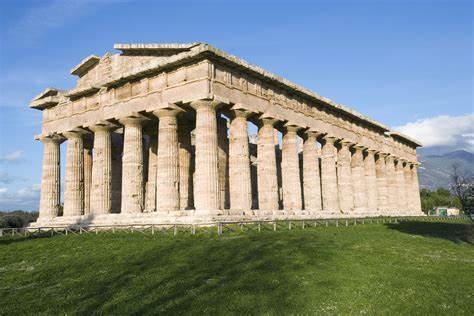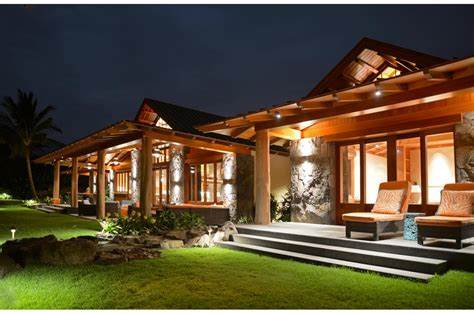Step into a world where time stands still, and the beauty of ancient Hawaiian architecture comes alive. In this captivating journey, we will take you back centuries to explore the remarkable craftsmanship and cultural significance of the structures that shaped the Hawaiian landscape. From the imposing heiaus (temples) to the intricate hale pili (grass houses), the architectural wonders of Hawaii have a story to tell.
The ancient Hawaiians had a deep connection with the land and a profound respect for their natural surroundings. This reverence is reflected in every stone, every timber, and every detail of their architectural marvels. The use of sustainable materials ensured harmony between man and nature, while the intricate designs were an expression of their rich cultural traditions.
Join us on this enchanting adventure as we unravel the secrets of ancient Hawaiian architecture. Discover the wisdom of the old and gain a new appreciation for the timeless beauty that still remains today. Let the magic of the past inspire you as we delve into the fascinating world of Hawaiian architectural heritage.
Contents
- 1 The Significance of Ancient Hawaiian Architecture
- 2 Key Features of Ancient Hawaiian Architecture
- 3 Types of Ancient Hawaiian Structures
- 4 Examples of Famous Ancient Hawaiian Architecture
- 5 Techniques and Materials Used in Ancient Hawaiian Construction
- 6 Preservation and Restoration Efforts of Ancient Hawaiian Architecture
The Significance of Ancient Hawaiian Architecture
Ancient Hawaiian architecture holds immense cultural and historical significance, it serves as a testament to the island’s rich heritage and the ingenuity of its people. The structures not only provided shelter but also played a vital role in religious practices and social gatherings.
The architecture of ancient Hawaii was deeply rooted in the belief systems and cultural traditions of the Hawaiian people. The buildings were designed to align with the natural elements and honor the gods. Each structure had a specific purpose and was meticulously constructed to fulfill its intended function.
Moreover, ancient traditional Hawaiian architecture reflects the islanders’ sustainable way of life. The use of locally-sourced materials, such as lava rock, coral, and native woods, showcased their deep connection with the land. The careful selection and integration of these materials ensured that the structures blended harmoniously with the environment.
Key Features of Ancient Hawaiian Architecture
Ancient Hawaiian architecture is characterized by its unique features and design principles. One of the most notable aspects is the use of open-air spaces. Traditional Hawaiian structures often had open-sided walls or gaps between the thatched roof and the walls, allowing for natural ventilation and a seamless connection with the surrounding landscape.
The buildings were also designed to withstand the harsh tropical climate. High-pitched roofs provided protection against heavy rainfall, while raised platforms prevented flooding. Additionally, the use of natural materials and construction techniques ensured durability and resistance to natural disasters such as earthquakes and hurricanes.
Another key feature of ancient Hawaiian architecture is the intricate craftsmanship and attention to detail. Elaborate carvings, intricate patterns, and symbolic decorations adorned the structures, showcasing the islanders’ artistic skills and cultural expressions. These intricate designs told stories and conveyed spiritual meanings, adding a layer of depth to the architectural wonders.
Types of Ancient Hawaiian Structures
Ancient Hawaiian architecture encompassed a variety of structures, each serving a specific purpose within the community. One of the most prominent types of structures was the heiau, or temple. These sacred places were used for religious ceremonies, offering sacrifices, and connecting with the gods. The heiaus varied in size and design, ranging from simple platforms to elaborate tiered structures.
Another notable type of structure was the hale pili, or grass house. These traditional dwellings were made of a framework of wooden poles covered with layers of thatch made from local grasses. The hale pili provided shelter for families and were designed to be easily dismantled and reassembled as needed.
Other types of structures included fishponds, known as loko i’a, which were used for aquaculture, and royal residences, known as hale ali’i, which served as the homes of Hawaiian chiefs. Each type of structure played a crucial role in the daily lives of the Hawaiian people and showcased their ingenuity and resourcefulness.
Examples of Famous Ancient Hawaiian Architecture
Hawaii is home to numerous examples of ancient Hawaiian architecture that have stood the test of time. One notable example is the Pu’ukohola Heiau located on the Big Island. Built by King Kamehameha I in the late 18th century, this massive temple played a significant role in his quest to unite the Hawaiian islands. The Pu’ukohola Heiau stands as a testament to the architectural prowess of the ancient Hawaiians and the power of their leaders.
Another famous example is the Hale o Keawe Heiau in Honaunau, also on the Big Island. This sacred site is believed to house the remains of Hawaiian royalty and was a place of worship and reverence. The Hale o Keawe Heiau showcases the intricate stone masonry skills of the ancient Hawaiians and is a site of cultural and historical importance.
On the island of Maui, the Pi’ilanihale Heiau stands as one of the largest heiaus in Hawaii. This massive stone temple covers an area of over 10 acres and is a testament to the impressive engineering and construction abilities of the ancient Hawaiians. The Pi’ilanihale Heiau is a site of great archaeological significance and offers a glimpse into the past.
Techniques and Materials Used in Ancient Hawaiian Construction
Ancient Hawaiian construction techniques and materials played a crucial role in the durability and longevity of the structures. The use of volcanic rocks, such as basalt, and coral as the primary building materials ensured the strength and stability of the buildings. These materials were readily available on the islands and were shaped and fitted together with precision.
The ancient Hawaiians employed a technique known as “stacking and fitting” to create sturdy walls. The stones were carefully selected and shaped to interlock, creating a solid and cohesive structure. The craftsmanship involved in this process ensured that the buildings could withstand the forces of nature and the test of time.
Another technique used in ancient Hawaiian construction was the use of lashing. Wooden beams and poles were bound together using natural fibers made from plants, such as hau and olonā. These lashings provided additional strength and stability to the structures, allowing them to withstand strong winds and earthquakes.
Preservation and Restoration Efforts of Ancient Hawaiian Architecture
Preserving and restoring ancient Hawaiian architecture is of utmost importance to ensure the survival of these cultural treasures. Various organizations and individuals are dedicated to the conservation and maintenance of these structures, allowing future generations to appreciate and learn from them.
Efforts are made to maintain the integrity of the buildings by conducting regular inspections, repairs, and structural reinforcements. Traditional construction techniques and materials are utilized in restoration projects to ensure authenticity and historical accuracy. Additionally, educational programs and interpretive signage help raise awareness about the significance of these structures and promote a deeper understanding of Hawaiian culture.
Ancient Hawaiian architecture is a testament to the island’s rich cultural heritage and the ingenuity of its people. The structures exemplify the harmony between man and nature, the deep respect for the environment, and the artistic skills of the ancient Hawaiians. By exploring the key features, types of structures, examples, techniques, and preservation efforts, we can gain a deeper appreciation for the timeless beauty of ancient Hawaiian architecture. Let us continue to protect and celebrate these architectural wonders, ensuring that they remain a source of inspiration for generations to come.
Embark on this journey and witness the awe-inspiring creations that tell the story of a lost era, where the past and present converge in perfect harmony. Welcome to the world of ancient Hawaiian architecture.



